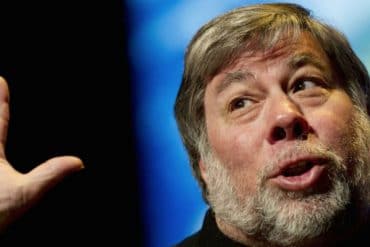Despite turning eighty-four this year, lifelong island regular Seward Johnson still exudes the childlike enthusiasm and fun sense of mischief that has defined his prosperous art career. Johnson is known around the world for his lifelike bronze sculptures that range from everyday people doing everyday things to much-larger-than-life creations of iconic figures and images.
This summer, Johnson is being honored with a massive retrospective featuring more than a hundred of his sculptures across the 42 acres of the Grounds for Sculpture, an art park that Johnson founded in Hamilton, New Jersey in 1984. The exhibit is the largest the park has put on. “I keep calling it my resurrection,” the artist jokes. “It’s what I’ll need by the time it’s over.”
Johnson sounds anything but tired. He tells story after story with a warmth and energy that belies his nine decades. To talk with him is to feel as though he’s immediately put his arm around you and wants you to hear his best stories, many of which center around Nantucket.
The grandson of the co-founder of Johnson & Johnson, first name in Band-Aids and baby shampoo, Johnson started coming to the island as a child when his father would take the family sailing from Chatham. He tells stories of debauched art openings, parties covered by the New York Times, and run-ins with blowhards at the Wharf Rats club. “We knew everybody,” he says. Nantucket is small enough to feel like a big extended family, and that’s how it feels for the artist.
As for extended family, the actor Michael Douglas is Johnson’s first cousin, and he relishes in the telling of the time last summer when Douglas and Robert De Niro came over to his home on the island. De Niro said something which prompted Johnson to say, “Well, that’s an oxy- moron.” The formidable actor misheard him, thinking he’d just been called a moron by his host. “If only I’d had a camera,” Johnson says, a big smile in his voice. “You should have seen his face! It kept changing. It was so volatile. It was delicious! When he finally got it [De Niro] burst out laughing and threw his arms around me.”
Nantucket is an especially important place for Johnson, who divides his time between Key West, New Jersey, and Nantucket, because it’s where he met his wife Cecelia Joyce. Back in the mid-sixties, the two of them, strangers, found themselves at LaGuardia Airport in New York, waiting to get on a flight to the island. The plane was overbooked, and they were forced to wait until the next day to make the trip. They had dinner together. And they had dinner together the next night on Nantucket. “I knew that was it when we had that dinner,” he says. “I swear it was the most beautiful thing in the world.” Next year is their fiftieth anniversary.
It was Cecelia who steered Johnson toward sculpture. Johnson admits to flunking all sorts of school, dyslexia making both math and reading difficult for him. When it came time to go to college, he enrolled in the University of Maine’s poultry husbandry program, the only place that would have him. However, he didn’t finish and joined the Navy for four years. He had a stint at the family business at Johnson & Johnson, but was fired after an argument with his uncle. While living in Cambridge, he and Cecelia painted together and started taking classes at the Cambridge Center for Adult Education. “It was too much fun,” he says. “I was used to suffering going to work. I needed more resistance.”
Knowing her husband grew up on a farm and had mechanical aptitude, Cecelia suggested he try his hand at sculpture. “It was so perfect for me,” he says. He was thirty-eight years old at the time. The first sculpture he made, a nude woman in the fetal position in polished stainless steel, took nine months to make, and won the grand prize in a contest run by U.S. Steel with over eleven thousand entrants. “I haven’t won an award since,” he laughs.
His first series, “Celebrating the Familiar,” was about capturing what happens on the street. “I tried to celebrate getting out of the house,” he says. This was during the seventies, he explains, and crime waves were making people nervous to go into parks. His idea was to put responsible looking people, like a woman on a bench rummaging through her purse, as decoys in the park to bring people back in.
In the early seventies, just three years after completing his first sculpture, he founded a technical school of sculpture in Princeton. “It was such an exciting place,” he says. There were sculptors there from all over the world. “We took people who could overcome problems, and they’d teach each other sideways. It was a wild place.”
Around the same time, his father asked him to take over the investing for his foundations. Johnson balked, reminding his dad he could barely add, and suggested they hire someone else. His dad wouldn’t hear it, so Johnson ended up sculpting while wearing a headset, trading, in charge of a huge portfolio. “I was one busy fellow,” he says. Yet this last year has been busier. In preparation for the retrospective, he claims he’s never worked so hard in his life.
Some of Johnson’s most well known sculptures center around the most iconic people and images in the world—a twenty-six-foot Marilyn Monroe with her white skirt blowing, for example, and a twenty-five-foot take on the sailor and the nurse mid-kiss from the ubiquitous photograph “V-J Day in Times Square” by Alfred Eisenstaedt. Johnson has also done a series of meticulous sculptural re-imaginings of famous impressionist paintings. People can sit and pass fruits and bread with the three picnickers of Manet’s “Le déjeuner sur l’herbe.” John- son enlarged the painting to a life-sized scale and added a dimension. He called it “Dejeuner Déjà Vu.”
When asked which of his sculptures is his favorite, Johnson picks one that speaks to his mischievousness. He describes a sculpture of three men playing poker. The two older guys, slouching in their seats, are cheating the young guy, who’s sitting upright and looking nervous. “You can tell exactly what’s happening by reading the cards, and reading their expressions,” says Johnson. There’s a pride mixed with amusement when he talks of his work. In the seventies, eighties, and nine- ties, he sold $36 million worth of work. “And all I was doing was having fun.” The same holds true right now as Johnson shows no signs of slowing down.






